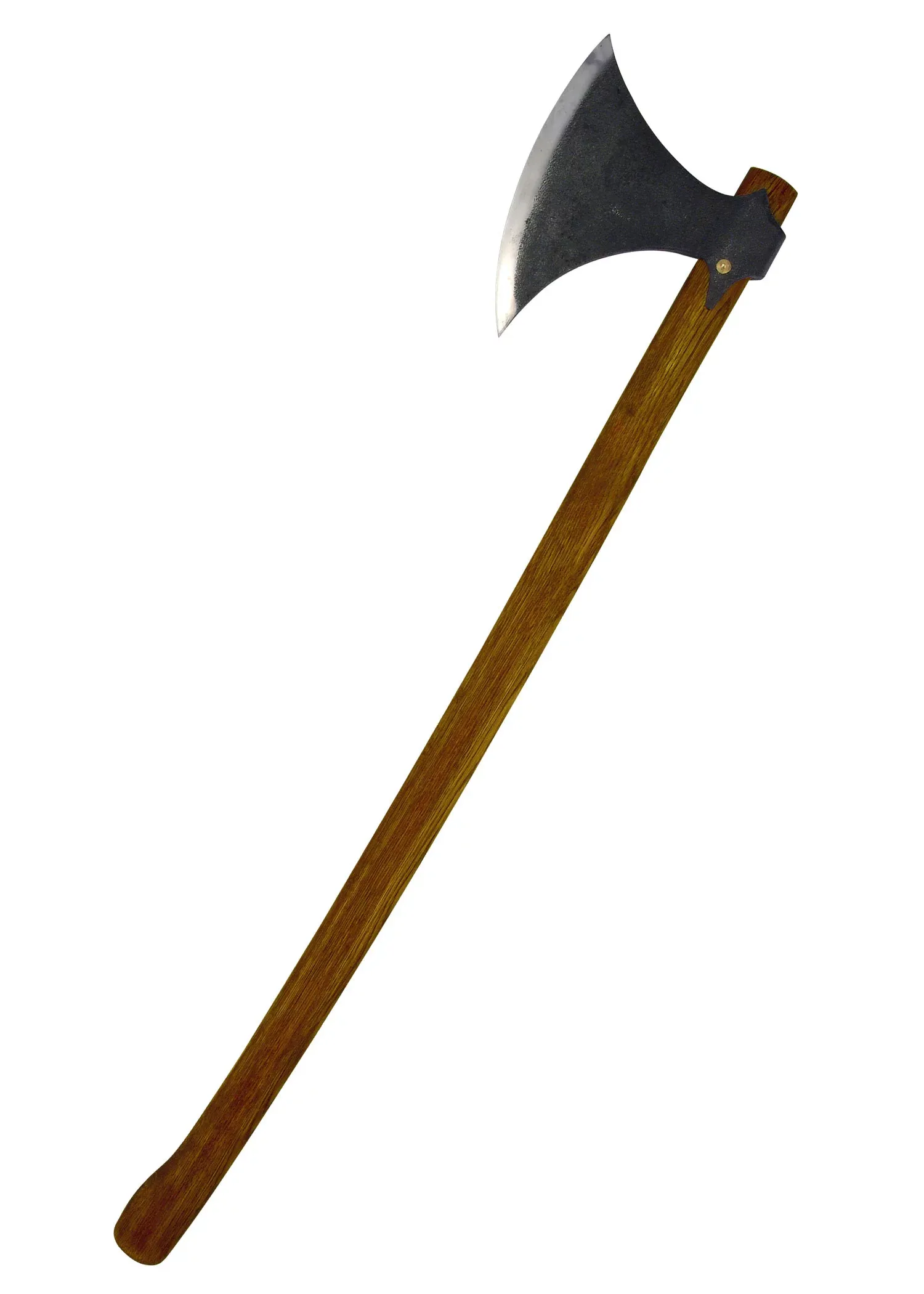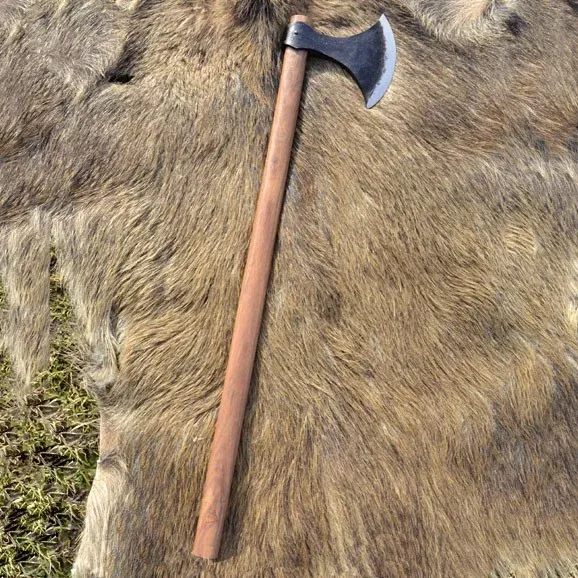What is the Danish Axe?
The Danish Axe, also known as Viking Axe, is one of the most emblematic weapons of the Middle Ages. This war tool originated in the Nordic peoples and quickly gained renown for its effectiveness and power in battles. In this article, we will explore its origin, structure, history, and legacy.
Origins and Description of the Danish Axe
Initially conceived as a lumberjack tool, the Danish Axe was adapted for military use due to its effectiveness and ease of handling. Originating from Northern Europe, its design and manufacturing reflect the technical skill of artisans of the time. The axe is primarily characterized by its large and wide blade, although thin, which provided an adequate balance between strength and lightness.

Morphology and Combat Use
The design of the Danish Axe is highly specific for war, making it stand out among other medieval weapons. The axe handle could reach between 120 cm and 180 cm in length, providing the wielder with a formidable reach. The blade, typically made of hard iron, measured approximately 30 cm in width, allowing for devastating cuts. These characteristics enabled the axe to be wielded efficiently with both hands, becoming a lethal tool in battles.
Its smaller and lighter head compared to other battle axes contributed to greater mobility, ensuring that Nordic warriors could remain agile and effective in close combat.
The History and Legend of the Danish Axe
The use of the Danish Axe became popular with the huscarls, the elite guard of Scandinavian kings, and during Viking raids across much of medieval Europe. This weapon earned the nickname "orphan maker," given its brutal effectiveness on the battlefield. During these raids, the axe not only served as a war tool but also established itself as a symbol of terror and power, contributing to the expansion and fame of the Vikings.
Notable Exemplars and Legacy
Among the most famous Danish axes is the Mammen Axe, discovered in Jutland and dated to the late 10th century. Richly adorned with silver inlays, it was likely used in religious ceremonies, indicating that these weapons, in addition to their military use, held profound cultural and ritual significance.

The Legacy of the Danish Axe
Although its use decreased as military tactics and defenses evolved, the Danish Axe has left an indelible mark on military history. It remains a fascinating piece for historians and enthusiasts of Viking culture, who see in it not only a weapon but a symbol of the rich and complex Nordic society.
| Aspect | Description |
|---|---|
| Origin | Nordic peoples of Europe |
| Handle Length | 120 cm - 180 cm |
| Blade Width | Approximately 30 cm |
| Material | Hard Iron |
| Uses | War, religious rituals |
The Danish Axe is a true testament to the ingenuity and skill of the Nordic peoples, representing the balance between functionality and symbolism. Its legacy endures, evoking images of epic battles and adventurous journeys through the mists of time.




























